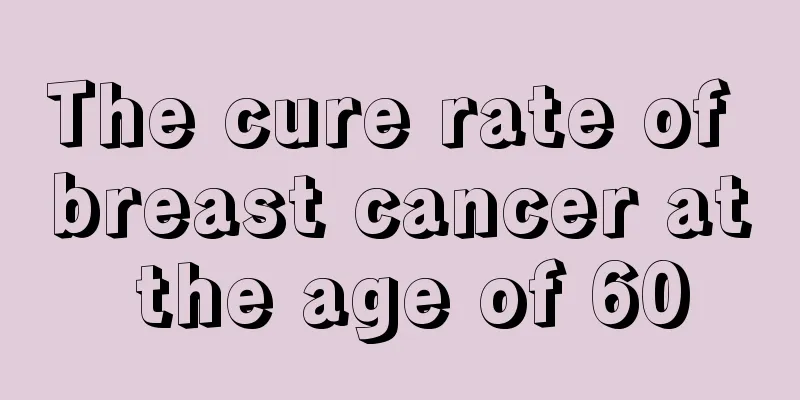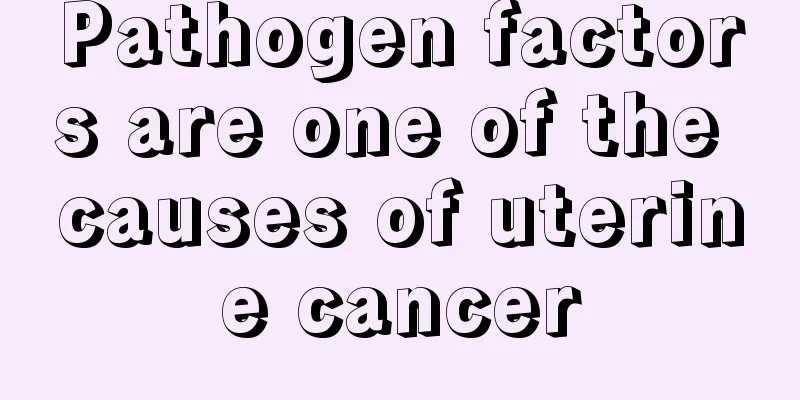The cure rate of breast cancer at the age of 60

|
The cure rate of breast cancer at the age of 60 varies depending on individual conditions, cancer stage and treatment methods. The cure rate of early breast cancer can be as high as 80%-90%, while the cure rate of late stage breast cancer is relatively low. However, through scientific treatment and active lifestyle improvement, survival time can still be significantly prolonged and quality of life can be improved. The following will analyze in detail the factors that affect the cure rate and the corresponding treatment plans. 1. Factors affecting the cure rate of breast cancer 1. Cancer staging Breast cancer is divided into stages 0 to 4. The earlier it is discovered, the higher the cure rate. For example, the cure rate of stage 0-1 breast cancer can reach more than 90% through surgery, radiotherapy, chemotherapy and other treatment methods; the cure rate of stage 2-3 is about 60%-80%; and the possibility of cure is lower in stage 4 because the cancer cells have spread to other organs, but individualized treatment can still be used to delay the disease. 2. The patient's physical condition Elderly patients generally have decreased organ function and immune levels, but as long as they do not have serious complications, they can still tolerate treatment. Doctors will design appropriate treatment plans based on the patient's specific conditions to avoid overtreatment or undertreatment. 3. Molecular typing and hormone receptor expression Breast cancer is divided into hormone receptor positive (such as ER/PR positive), HER2 positive and triple negative according to molecular classification. Among them, hormone receptor positive has a relatively good prognosis, HER2 positive has a significantly improved cure rate through targeted drug therapy (such as trastuzumab), while triple negative breast cancer is relatively challenging to treat, but new immunotherapy is expanding hope. 2. Treatment of breast cancer and improvement of prognosis 1. Surgery The main treatment for breast cancer is surgery, which is mainly divided into breast lumpectomy (breast-conserving surgery) and mastectomy. Breast-conserving surgery is preferred for patients in the early stage, and radiotherapy is combined with surgery to reduce the risk of recurrence; while patients in the late stage or with larger tumors may need mastectomy. 2. Medication - Hormone therapy: If the patient's breast cancer is hormone receptor-positive, tamoxifen or aromatase inhibitors can be used as adjuvant therapy to effectively reduce the risk of recurrence. -Chemotherapy: Mainly used for patients with advanced stage or high-risk disease. Typical drugs include paclitaxel, doxorubicin, etc., which can help delay or inhibit tumor development. -Targeted therapy: HER2-positive patients can significantly improve their survival rate with targeted drugs such as trastuzumab or pertuzumab, which has become the standard of treatment. 3. Radiotherapy It is particularly suitable for removing residual cancer cells after breast-conserving surgery or local tumor resection, thereby reducing the risk of local recurrence. Modern precision radiotherapy technology can effectively protect surrounding healthy tissues and greatly improve safety. 4. Lifestyle intervention -Dietary adjustment: It is recommended to supplement foods rich in antioxidants (such as green leafy vegetables, berries) and foods rich in omega-3 fatty acids (such as deep-sea fish) on a daily basis, and reduce the intake of high-fat and processed foods. -Moderate exercise: Low-intensity exercises such as walking and yoga can enhance immune function and improve patients' mood. 5. Mental health support Facing the diagnosis and treatment of breast cancer, the psychological pressure is heavy. Patients can seek help from professional psychological counseling or support groups to actively cope with the physical and mental challenges brought by the disease. 3. Comprehensive suggestions for improving cure rate Regular physical examinations and early diagnosis and treatment are the key to improving the cure rate of breast cancer patients over 60 years old. Early detection of breast lumps or abnormalities requires timely medical treatment; after diagnosis, you should discuss personalized treatment plans with your doctor and cooperate with your ideal lifestyle. For patients over 60 years old, as long as they actively cooperate with treatment, many cases can achieve long-term relief or even clinical cure. The joint efforts of doctors and patients will bring health and hope to more breast cancer patients. |
<<: The reason why women have fibroids. Can women with fibroids get pregnant?
>>: The difference between ampullary cancer and pancreatic cancer
Recommend
What are the early symptoms of prostate cancer
Prostate cancer is a male disease that many frien...
What causes throat cancer
Laryngeal cancer is usually caused by bad living ...
How to treat spinal disease?
Spinal diseases can have a great impact on our li...
Can early-stage colon cancer be cured?
For early-stage colon cancer, if the lesion area ...
Is it normal to have a decrease in fetal movement during the due date?
In the middle and late stages of pregnancy, when ...
What symptoms does stress and anxiety cause?
Tension and anxiety are actually a kind of mental...
What are the symptoms of liver cysts
We all need to be responsible for our own physica...
Endometrial cancer first stage cure
The effectiveness of uterine cancer treatment is ...
How to use a face towel correctly?
As people's quality of life improves, more an...
Is it hereditary that the front and back sounds of the tongue tip are unclear?
Unclear pronunciation of the front and back sound...
What to do if thighs are rubbed
Many people feel that their thigh roots are rubbe...
Can aloe vera remove freckles?
In daily life, no one wants to have freckles on h...
How to improve goose bumps on thigh skin
Goose bumps on the thigh skin are believed to be ...
5 kinds of facial expressions may kill you
Signs of illness: Red or purple nose The tip of t...
Special medicine for preventing and controlling termites
If people find termites at home or in other livin...









